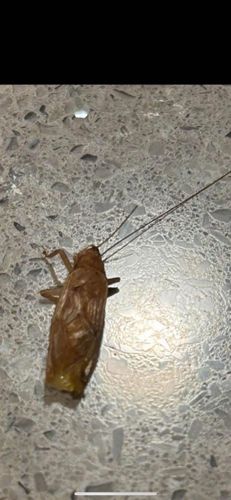Cockroach
Scientific Name: Varies by species (e.g., Periplaneta americana for American cockroach, Blattella germanica for German cockroach)
Order & Family: Blattodea (Order), Blattidae/Blattellidae/Blaberidae (Families, depending on species)
Size: Typically 1.5 cm to 5 cm (0.6 to 2 inches) depending on the species. The one in the image appears to be on the larger side, possibly an American cockroach or similar large species.

Natural Habitat
Cockroaches thrive in warm, humid environments, often found in kitchens, bathrooms, basements, and sewers. They prefer dark, secluded areas close to food and water sources. Some species live primarily outdoors.
Diet & Feeding
Cockroaches are omnivores and scavengers. They will eat almost anything, including food scraps, decaying matter, feces, glue, paper, and even other insects.
Behavior Patterns
Cockroaches are primarily nocturnal and gregarious. They are very fast runners and can squeeze into small cracks and crevices. They often forage at night and return to harborage areas during the day. Females produce oothecae (egg cases) which contain multiple eggs. Lifecycle depends on species, but can range from a few months to over a year.
Risks & Benefits
Risks: Cockroaches are considered pests. They can spread bacteria (like Salmonella and E. coli), allergens, and can worsen asthma symptoms, especially in children. They can also contaminate food and surfaces. Benefits: In natural ecosystems, some species play a role as decomposers, breaking down organic matter. However, their presence in human dwellings offers no benefit and poses health risks.
Identified on: 9/3/2025